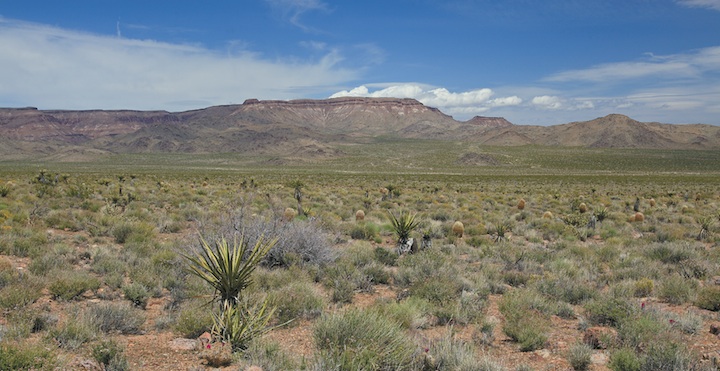Posted on 9 July 2012 By From Sierra Club reports
ACTION
The Chapter’s Water Committee actively opposes the Cadiz Inc. water-pumping plan. To become involved in this campaign, contact Charming Evelyn at bcharmz@aol.com.

More than 30 years ago, a company called Cadiz Inc. came up with a plan to pump water from aquifers in the Mojave Desert. Ten years ago, late desert activist Elden Hughes and other Sierra Club members who had worked hard on the Desert Protection Act opposed the project that could forever harm the desert’s ecosystem and drain one of its most precious resources.
Now, the plan resurfaces anew as do concerns about its viability and impact on the land. The Santa Margarita Water District in Orange County is interested in buying the water. So what’s so wrong with this water mining plan that stands to make $1 billion to $2 billion off water sales for Cadiz? Plenty.
It’s unsustainable: This project is located in the desert of Southern California in an area with very low precipitation. Cadiz Inc. intends to remove 50,000 acre feet to 75,000 acre-feet of water per year for 50 years and sell it to local water agencies in Los Angeles and Orange Counties. However, most scientists estimate the recharge rates are much lower. The U.S. Geologic Survey estimates that it lies between 2,000 acre feet and 10,000 acre feet a year. This means the groundwater levels will drop and drop, like taking more water out of a bathtub than you put in. This is, simply, unsustainable.
It could have adverse impact on federal lands and water resources: Cadiz Inc. claims there will be no impacts to the Mojave National Preserve’s springs, but the National Park Service says that conclusion is premature. Another significant issue is the delayed response in the aquifer. The cone of depression, or area of drawdown, is more extensive in the 100-year scenario (after 50 years of recovery) versus the 50-year scenario (at the end of project pumping). This indicates that unforeseen impacts that occur as a result of project pumping, even if project pumping is halted immediately, will continue to manifest for an extended period of time. Therefore, the aquifer system will be very difficult to manage under the monitoring and mitigation plan.
Its impacts analysis is flawed: The analysis suffers in reliability as a result of the flawed hydrologic modeling. Of note are the continuously expanding outer limits of the cone of depression, or area of drawdown from pumping, after 100 years. Additionally, the cone is anticipated to extend to elevations approaching the head at Bonanza Spring, which is located in Sen. Dianne Feinstein’s proposed Mojave Trails National Monument. The plan could affect this important spring.
What about climate change and the project? It is likely that climate change will reduce the amount of precipitation that occurs as snowfall during the length of the proposed projected pumping period, thereby impacting the amount of water that will recharge the aquifer. This issue is not adequately addressed in the impacts analysis.
Bottom line: This project is an aggressive water mining scheme that could adversely impact water resources, air quality and our federal lands.
Photo: Mojave Desert Credit: Tom Politeo
